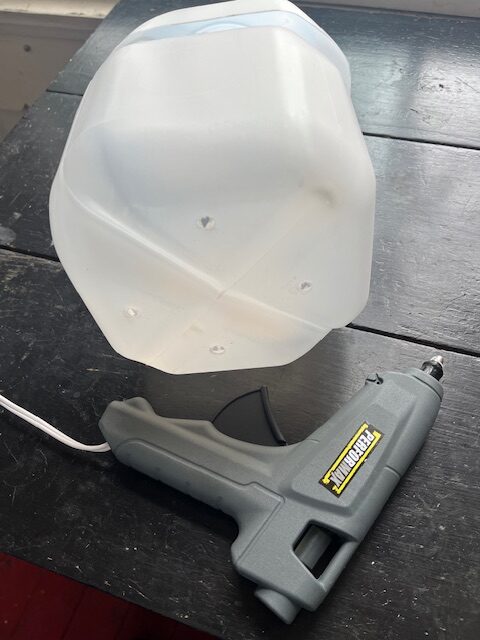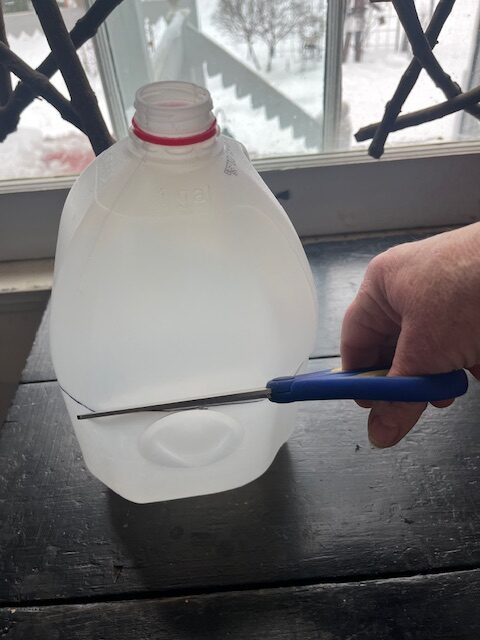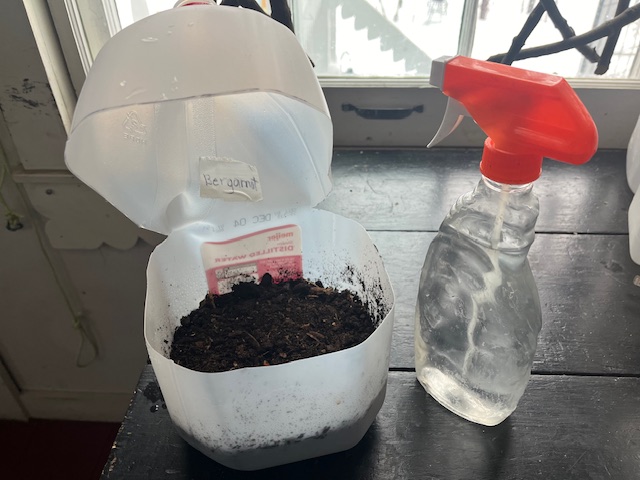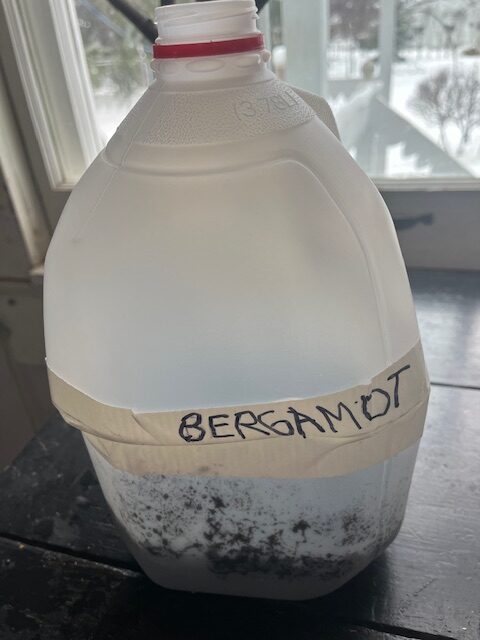Gallon Milk Jug Winter Seed Sowing

See the process demonstrated through photos at the end of the article.
See related Guest Editorial on growing native plants in your yard.
by Margaret Shaw
People have been doing this for a long time and it’s catching on. There are many articles online to read and learn about this easy method to start perennial seeds that require a cold spell. It jump-starts success and quicker inexpensive access to plants. If you collect seeds in the fall or get seeds from the seed library (at the the Manchester District Library) you will have lots of fun planting and sharing your plants. And maybe collect seeds to share next year.
This is a great system if you want to plant a dense area of perennials. You can also use this method in early spring to sow annual seeds, too. The jug acts as a mini greenhouse.
Collect rinsed gallon milk or water jugs. You can crowd the same seed type and grow a lot of plants in one gallon jug. How many plants do you need? Remember you’ll have to pot all these tiny plants come spring, although some people have it timed to plant directly after they are big enough and the area is prepared. The seedlings can actually mature in tight formation and still be gently pulled apart to pot or plant. These plants are winter hardened and should be ready to thrive outside the jug, just don’t let them dry out or be distressed by weather. Keep them in a protected spot after repotting.
I repot seedlings, allowing them to mature some more and gift them to encourage introducing natives to our yard habitat.
The basics of what you’ll need:
- a clean jug for each type of seed
- duct tape
- permanent black magic marker or grease pencil
- narrow knife and scissors
- seed
- water-filled spray bottle
Directions:
- Remove cap from bottle.
- Poke 4 drain holes in bottom (a heated Phillips-head screwdriver or hot-glue gun melts holes nicely). I ended up using my drill, which created nice, clean, fast holes. Slit holes are fine, too, but you’ll have to make more, 5–6.
- Mark a line 3 turns around jug level with base of handle, leaving hinge near handle.
- Pierce cut access with knife then cut along line with scissors (they cut straighter).
- Bend hinge back, then clean or rinse inside jug.
- Fill 2 inches or more depth of growing soil, medium.
- Sprinkle seed and cover with light layer of soil. Follow seed packet directions for sowing.
- Spray with water-filled spray bottle to dampen soil.
- Identify plant twice, inside container and outside container.
- Duct tape along cut edge to seal.
- Place outside in protected sunny area, where they will remain upright and not be knocked over. Some moisture will get in through opening, which allows air exchange. On the ground is fine. Snow cover is expected and is OK. I have seen where people leave them on a deck. It’s all good as long as they don’t get disturbed. Mine will be near my garden on the ground.
Now wait and watch.
When you see green plants growing, after the last frost date, you can remove the tape to better keep an eye on plant and moisture; water if needed.
If you’d like to try this in a group setting I will be holding two winter native seed sowing workshops this weekend at 610 City Rd. The first is the evening of Friday, February 2, from 6:30pm to 8:30pm. The second is on the afternoon of Saturday, February 3, from 1pm to 4pm, and is a drop-in style event. For a donation of $20 I will provide jugs, seeds, soil, and supplies. I will have coneflower, columbine, and butterfly weed. If you have clean, clear gallon milk or water jugs and/or native seeds you’d like to plant or share, please bring them.

Clean jug, drainage holes on bottom

Discard lid, mark and cut, leaving hinge

Cut on line, leaving hinge

Fill 2–3 inches of light soil and mark plant type inside container.
Sprinkle seed and cover with soil according to seed type. Spray with water to dampen soil.

Duct tape closed and label outside of container. Ready to place outside. You don’t want seeds to germinate before going through cold cycle.










You must be logged in to post a comment Login